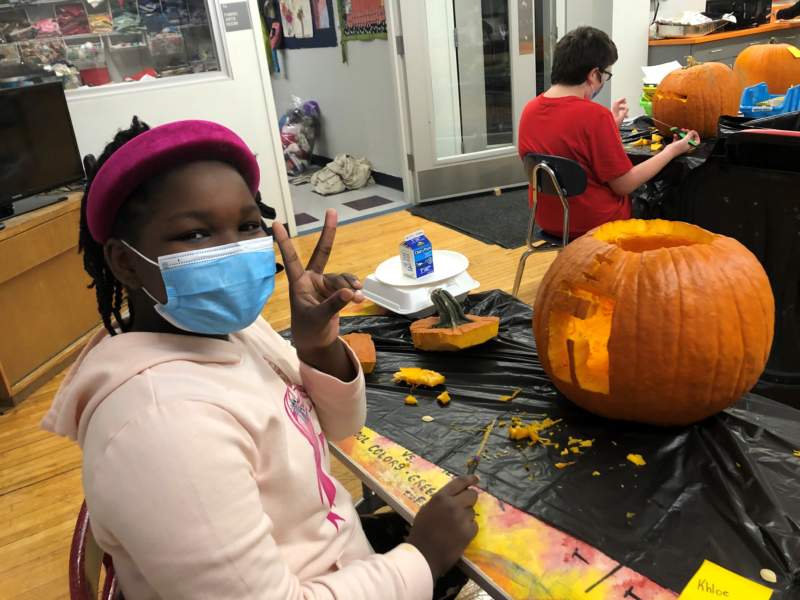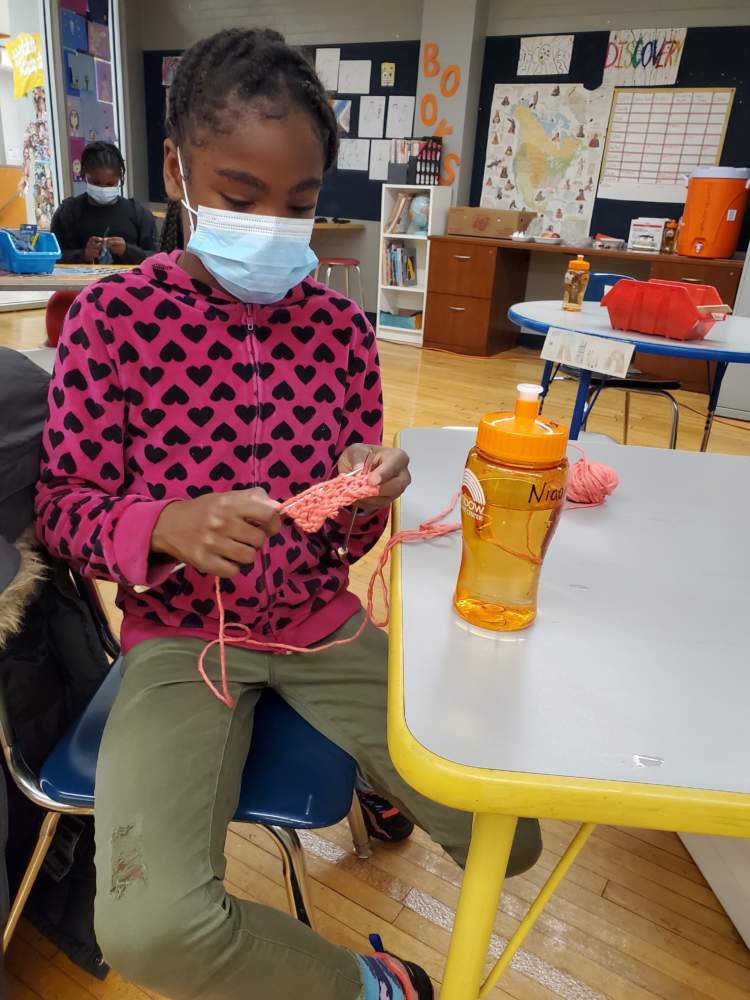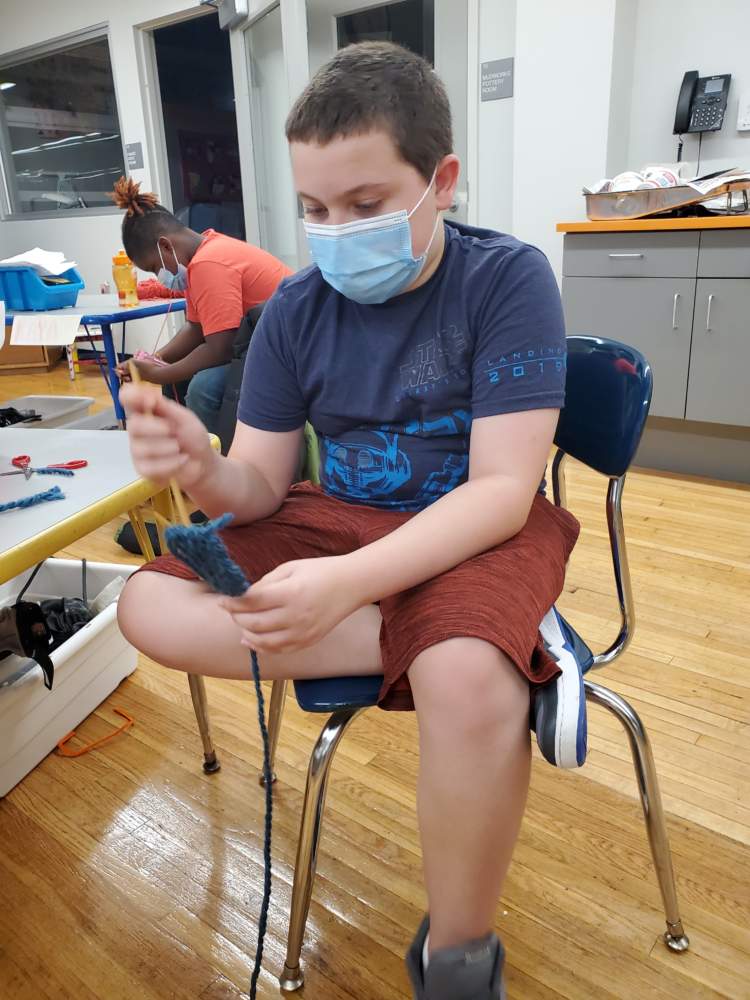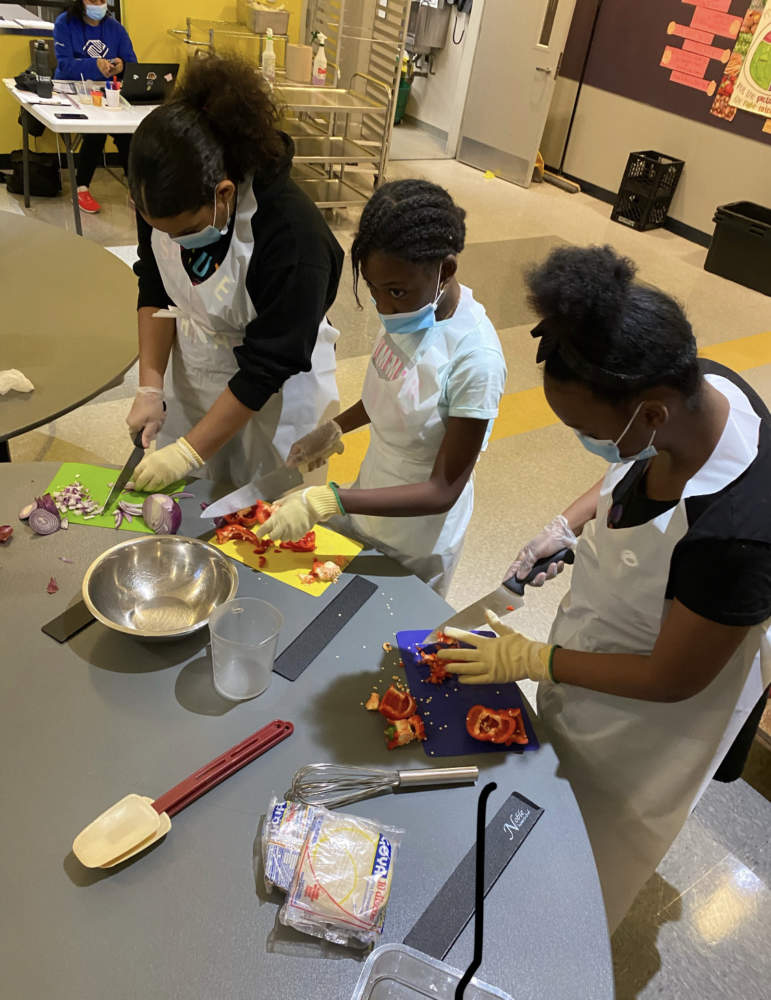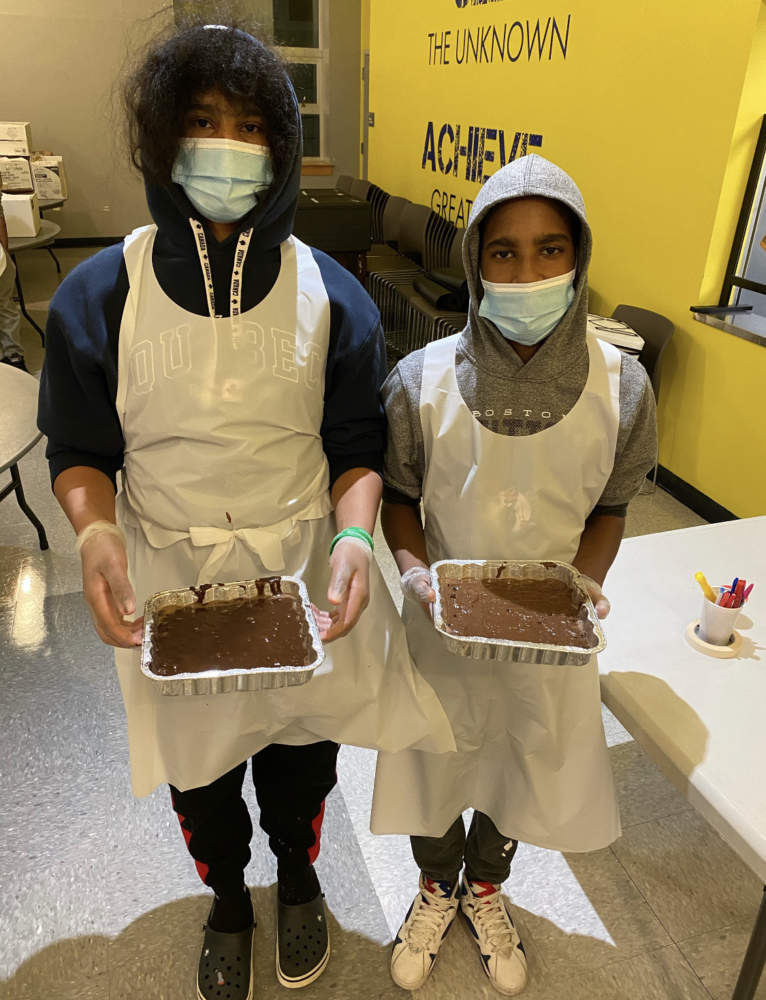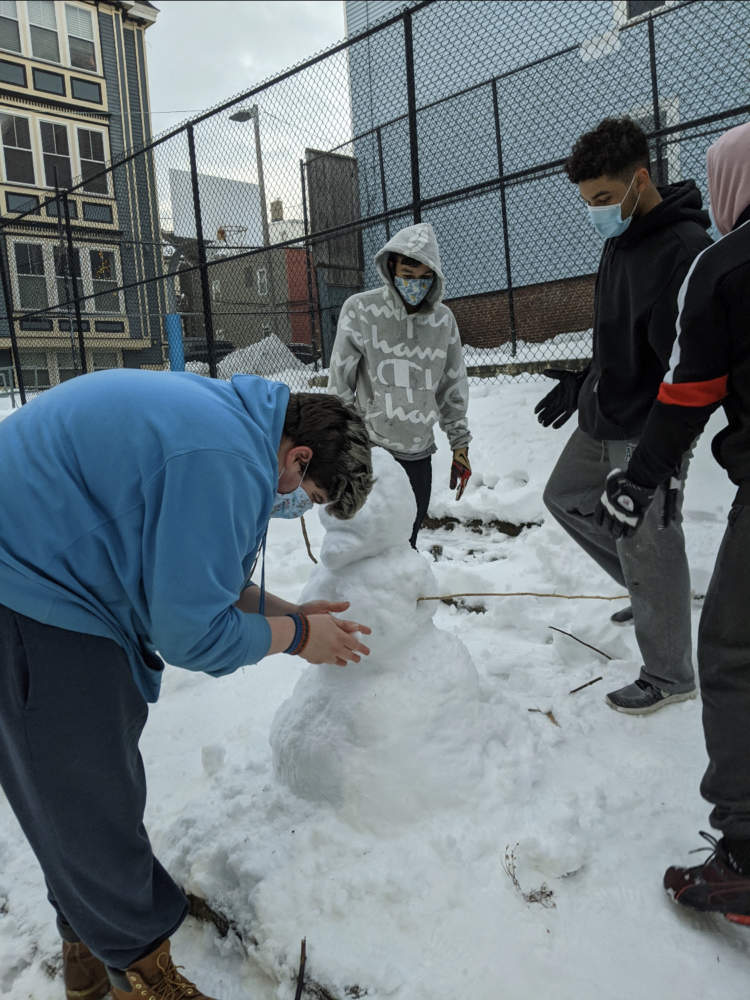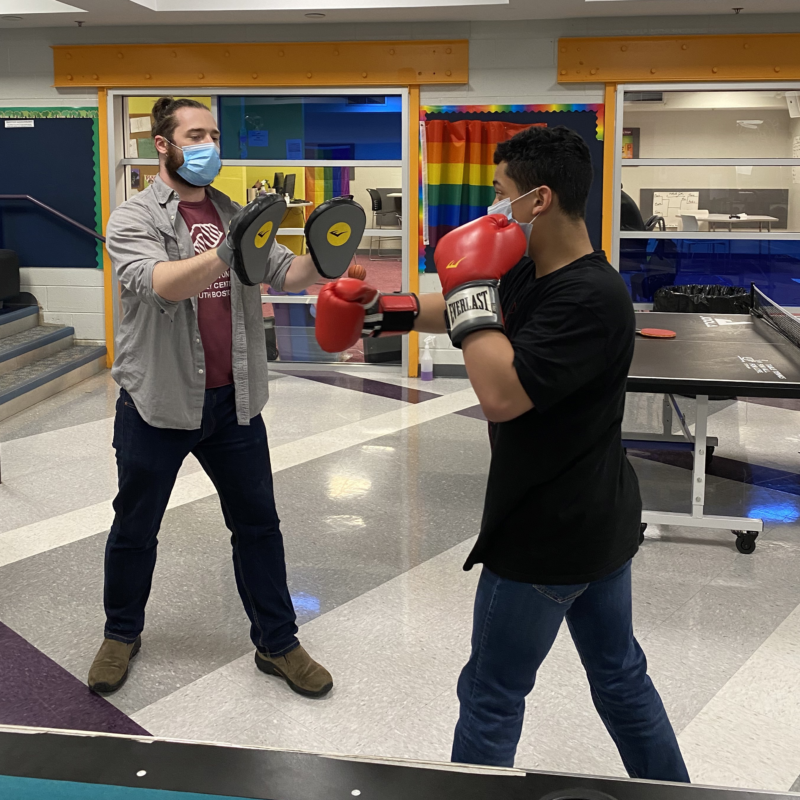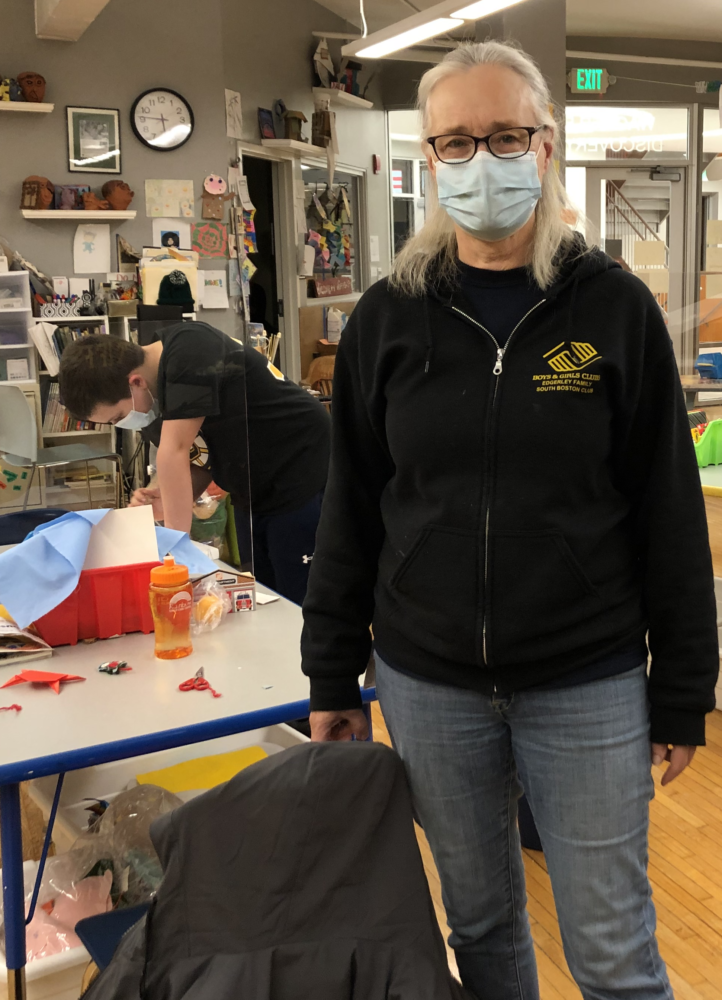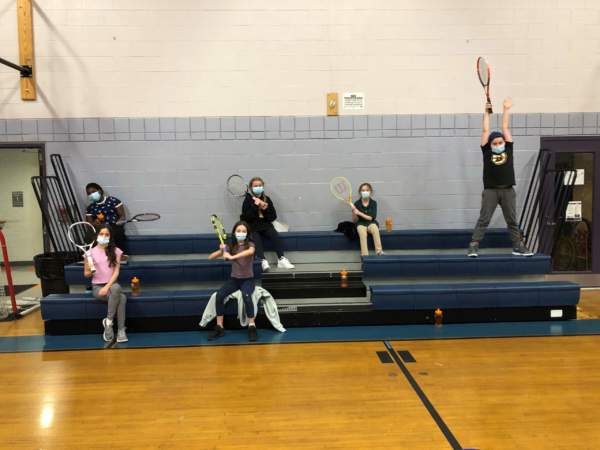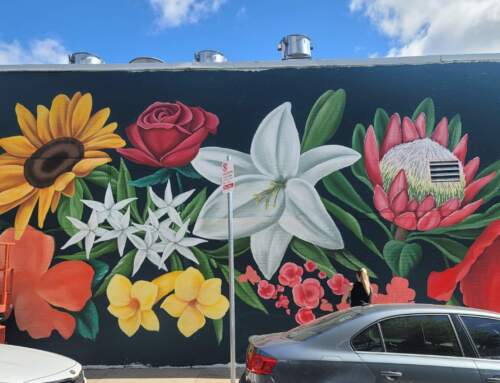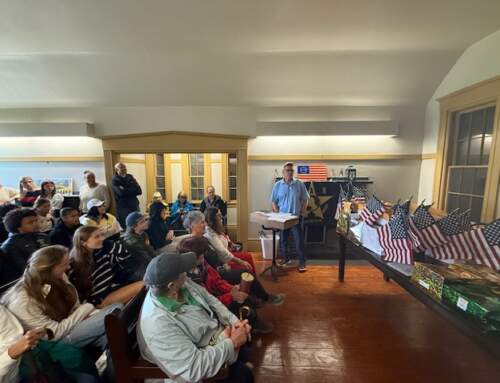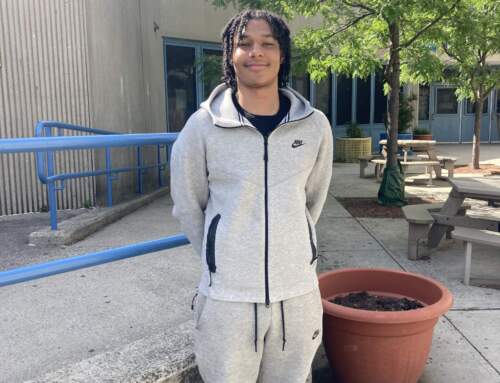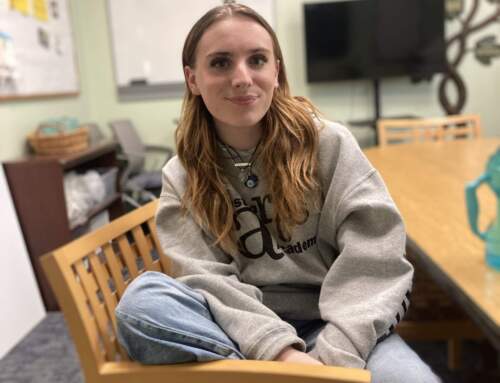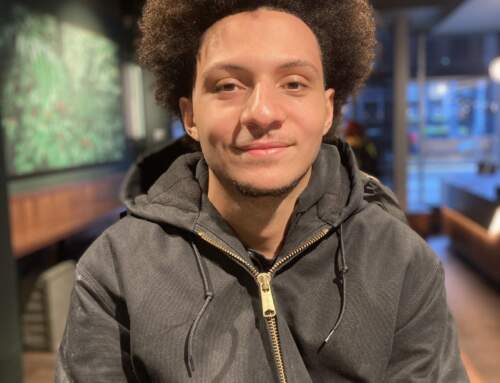By Ginger DeShaney
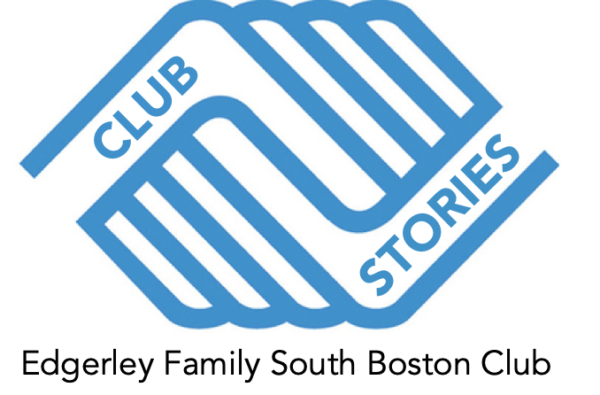 The kids in the Edgerley Family South Boston Boys & Girls Club after-school program are part of something special … especially during the COVID-19 pandemic.
The kids in the Edgerley Family South Boston Boys & Girls Club after-school program are part of something special … especially during the COVID-19 pandemic.
“We’re in this thing together. We’re a team; we’re a club,” said Michael Letchfield, Program Director at the Club and the manager of the after-school program. “The kids think, ‘It was a difficult year but my Club was behind me and I was part of something.’
“The members really appreciate what they are getting,” Michael added. “It’s a special deal. The kids feel like partners in this.”
Part of the mission of the Club’s after-school program — especially now — is to offer a respite.
“We try to provide some normalcy for the kids in this crazy world,” said Anne Gordon, the Club’s Arts Director and Summer Camp Director in addition to her work with the after-school program. Because there are fewer kids in the program due to the pandemic, she said staff members have more opportunities to get to know the kids and their families.
“We get a lot closer to the smaller groups of kids,” she said, noting that is one positive thing to come out of this.
“We provide some normalcy for our members in a traumatic time in their lives,” Michael echoed. The pandemic has upended kids’ lives, keeping them from seeing their friends and other caring adults. “We provide relief from that. Our kids are coming to the building where their friends are, where there are staff who care about them. We keep groups of friends together even through this horrible time.”
Sean, a fifth-grader at the Condon School, has missed only two days of the after-school program. His favorite part of the program? “Getting out of the house during COVID,” he said. “It’s great!”
The 45 kids in the program range in age from 9 years old to high schoolers and are divided into four groups (or homebases) with two staff leaders (there are an additional two staffers for the program). The program runs from 2:30 to 6:45 p.m. The Club serves the kids an evening meal and offers weekend meals to take home.
In the era of COVID-19, the groups follow a schedule. The members get the opportunity to do enrichment activities, such as music and performing arts, which exposes them to different activities. There is access to the gym. While in their homebases, the staff and members focus on what interests them.
Michael’s homebase consists of teens and preteens, and they like to cook; they also discuss health and relationship topics. Anne’s homebase, with younger kids, has done knitting, sewing, and jewelry making, and will be doing some pottery.
“It’s based on what their interests are; they can ask for anything we have,” Anne said. “Knitting has been great. It’s a very relaxing hobby. It’s the perfect COVID activity.”
Sean, for one, loves knitting. “It’s relaxing,” he said. “Before, we would knit on Tuesdays and now we can knit whenever we want.”
Before COVID, many more kids participated in the program and there were no homebases. There were places to do homework. Kids would hang out in the Teen Center before all the kids arrived from their schools. Club members rotated between the gym, art room, performing arts room, etc. without limits on the number of participants. There was less structure and more flexibility.
“Now, all the kids have a schedule,” Michael said. “It gives them more structure.”
The staff find games that allow members to be active and socially distanced. Tennis is great for that, as is soccer, Michael said. When Anne put out word to the community that the old, plastic rackets the Club had weren’t doing the job, the neighborhood donated 40 rackets. Now, she said, “we play almost every day.”
In the performing arts realm, Anne’s group has created small-scale scenery in boxes based on movies. Michael’s group is doing stop-motion. A group of pre-teens has regular band practice. Some of the music and performing arts work is showcased on YouTube.
There are six seniors in the program and staff make sure they are working on and submitting their college applications, Michael said. “With smaller groups, we can sit with them for an hour every week.”
Health and safety are top of mind in the program. After a group visits a room, there are 15 minutes before the next group can come in so staff can clean and disinfect the space. Staff also clean the bathrooms after every use. “We are being extra cautious,” Anne said.
Kids fill out health screening forms every day before going into the Club. They get masks from the staff. There are blue dots denoting safe distancing and kids wash and sanitize their hands regularly.
“We teach them how to take care of themselves,” Anne said. “There’s a whole other level to this; we are keeping them safe mentally and physically.”
Michael said the Club is doing what it can to “get them through this and still thrive. With smaller groups, there are more opportunities for them and more chances to discover new things.”
Anne finds that the members in the after-school program are “more thoughtful of other people. There’s more kindness toward other people.
“For kids who are home all day for school, this is a nice opportunity to get out and hang out with other kids,” Anne added.
And the parents are thankful for the support.
When kids were selected and registered for the program, Michael and the staff talked to parents and “opened up so many channels. Every parent has my number,” he said, noting they might reach out to him if their child is stressed or would like him to talk to their child.
“They can trust us,” he said.
“I’m proud of our program,” Michael said. “We’ve done an amazing job. The staff are doing more than usual and no one complains. If we hadn’t been able to figure this out, who knows where these kids would be?”
Throughout the pandemic, “the kids, in general, have been able to develop a lot of resiliency,” Anne said. “The kids are grounded. They are getting more special attention. We are able to give them more support.”
